thanks for the article. I'm a bit of a Cruise Control enthusiast, if not to say fanatic. i use it all the time, even in town. I will keep it engaged even for very short durations, say 5-10 seconds.
In many modern cars cruise controls are already built in, or you can get it factory fitter as an option. A few years ago I got myself an aftermarket cruise control and fitted it to my 1982 Mercedes W123. It's a very simple system, but I thought it might be interesting to see some of the details. I did a very detailed write up for the Dutch W123 club and I still have the photographs, so here's a condensed version.
There are many aftermarkets CC available. I choose the MagicSpeed 50 for a few simple reasons. It is a very simple and cheap system. I knew of various club members who had already installed it successfully and were quite pleased with it's operation. See here for some product information:
http://en.waeco.com/products/4374_452.php
The W123 had the factory option to have a CC installed. You can find all the bits in pieces second hand, but it can be a bit of a pain to get it all to work, so I decided to go the aftermarket way.
Ordered the MagicSpeed on line for about Euro 140 I believe.
Various CC have slightly different ways on how they work. The MS work has an actuator, connected to the engine vacuum. The actuator, through a bowden cable needs to be connected to the throttle cable. On the W123 there is no throttle cable, there is a linkage, so I had to modify and improvise a bit. Then there are two reed relays to be fitted to the clutch and brake pedal. The MS doesn't measure speed as such. It measure rpm of the prop shaft through another magnetic sensor. And of course there is a small control unit and the actual electronics control, so here goes;

The whole unit comes in one box and a manual on how to install and a schematic diagram

This is sort of upside down, you're looking at the props haft. There is a magnet attached to the prop shaft and a sensor is mounted on a bracket attached to the bottom of the car. None of standard brackets provided fitted properly so I made my own.
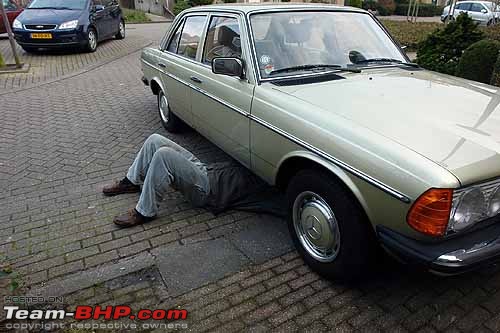
Getting to the prop shaft is not that difficult. Put the W123 with its front wheels on my drive and i can slide right underneath. But of a tight fit, (and cold it was autumn in the Netherlands!)
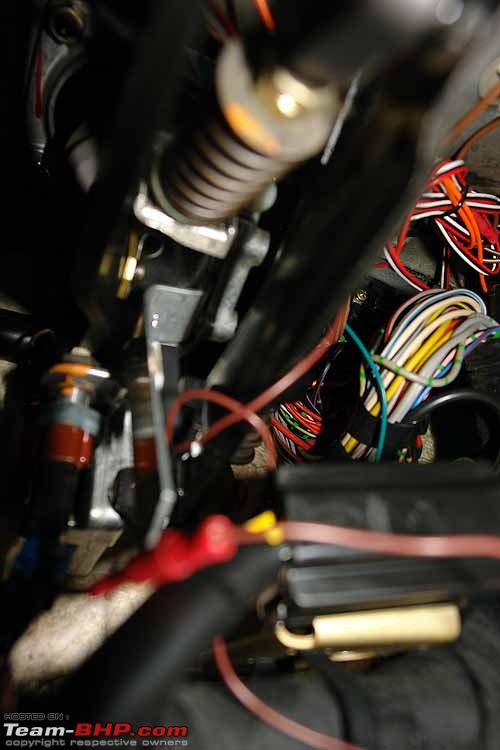
Not the best of photographs, but here we are looking from the footwell upwards. The shiny thing is a bracket I made. It hold one of the reed relays, in this case for the cloth. The magnet is attached to the clutch pedal. Positioning is a bit of a fiddle. As soon as you touch the clutch the reed relays need to disconnect and thus de-activate the CC. Similar for the brake, but there you can use the brake light switch.
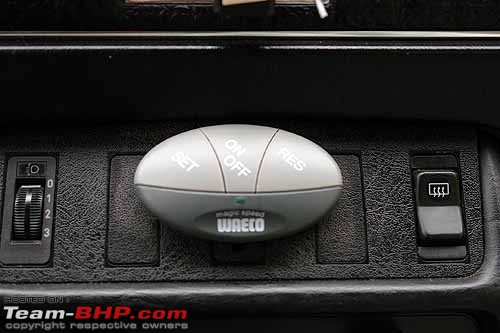
This is the switch to control the various CC functions. As this is a near concours state classic car I did not want to mess around with the interior. This switch I can easily remove, replace the little panel underneath and everything is completely original again.
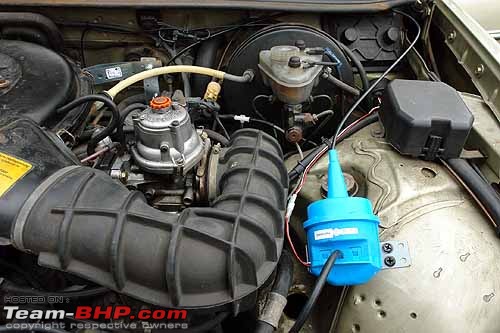
The vacuum actuator installed in the engine room. The bowden cable is a fix length and can't bend to much. Lucky me, the actuator fitted right on top of some existing hole in the chassis.
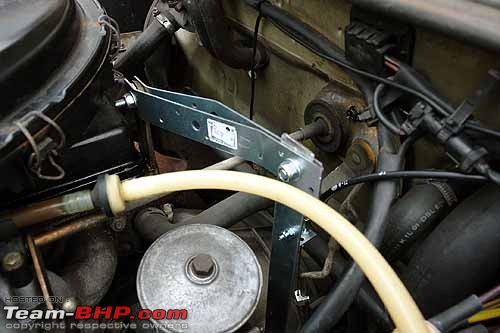
Here's where it got a bit tricky. As I said the W123 does't have a throttle cable, only endless linkages. So I had to improvise a bit. So I built this little support from some aluminum flat bars and got a few bits and pieces from a bicycle shop to make a support for the Bowden cable. If you look carefully, you can just see the end of the Bowden cable resting on this support. The cable that will move the throttle linkage is sticking out underneath the Bowden cable support.

Here's the clever bit. Another modification. You can see (vertical) throttle linkage. The inner cable front the Bowden cable is running parallel to the throttle linkage. I made, from a block of aluminum a small clamp that is attached to the throttle linkage. The inner cable runs through a hole in the aluminum support and has a stop at the end. What it does is the throttle linkage can move indecently of the cable. Once you engage the CC the stop will hit the clamp and pull put the throttle linkage. If you stomp on the accelerator you can still press the linkage. further up.
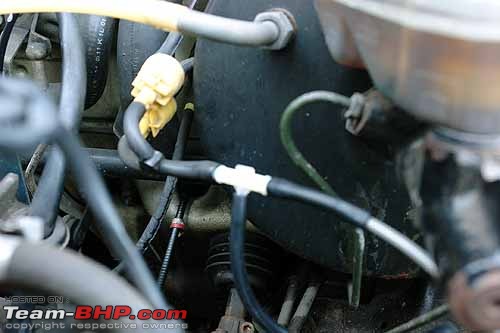
The actuator is connected to the engine vacuum lines. The same that goes to the brake booster. So I installed a T-connector tapping the vacuum before the check valves. Meaning that any vacuum problem on the CC shouldn't affect the brake booster.
It took about 10-12 hours to install of this. I had quite some problems to get it to work properly. had to experiment quite a bit with the correct setting on the CC electronics and the number of magnets on the prop shaft.
enjoy.
Jeroen
 (7)
Thanks
(7)
Thanks
 (6)
Thanks
(6)
Thanks
 (1)
Thanks
(1)
Thanks

 (1)
Thanks
(1)
Thanks

 (8)
Thanks
(8)
Thanks
 (1)
Thanks
(1)
Thanks
 (1)
Thanks
(1)
Thanks

 (9)
Thanks
(9)
Thanks


 (1)
Thanks
(1)
Thanks







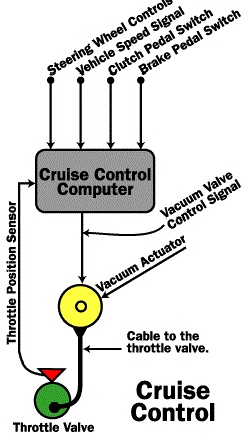

 Anyways thats another reason behind disabling it at low speeds. The designers will ensire you will be in the upper gears as far as possible. Also since its a method of throttle control, pressimg the clutch must disable CC because once the clutch is pressed, the engine will revv to glory if CC doesnt close the throttle on time.
Anyways thats another reason behind disabling it at low speeds. The designers will ensire you will be in the upper gears as far as possible. Also since its a method of throttle control, pressimg the clutch must disable CC because once the clutch is pressed, the engine will revv to glory if CC doesnt close the throttle on time.


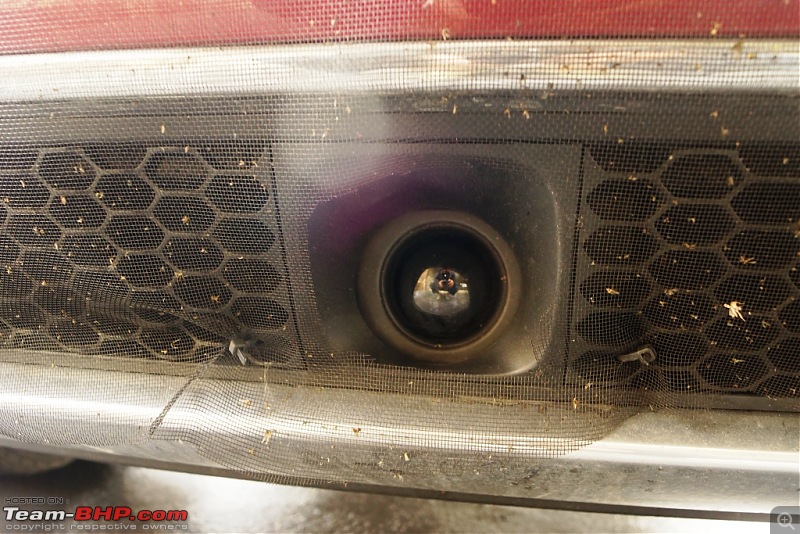
 Thanks Bro.
Thanks Bro.







